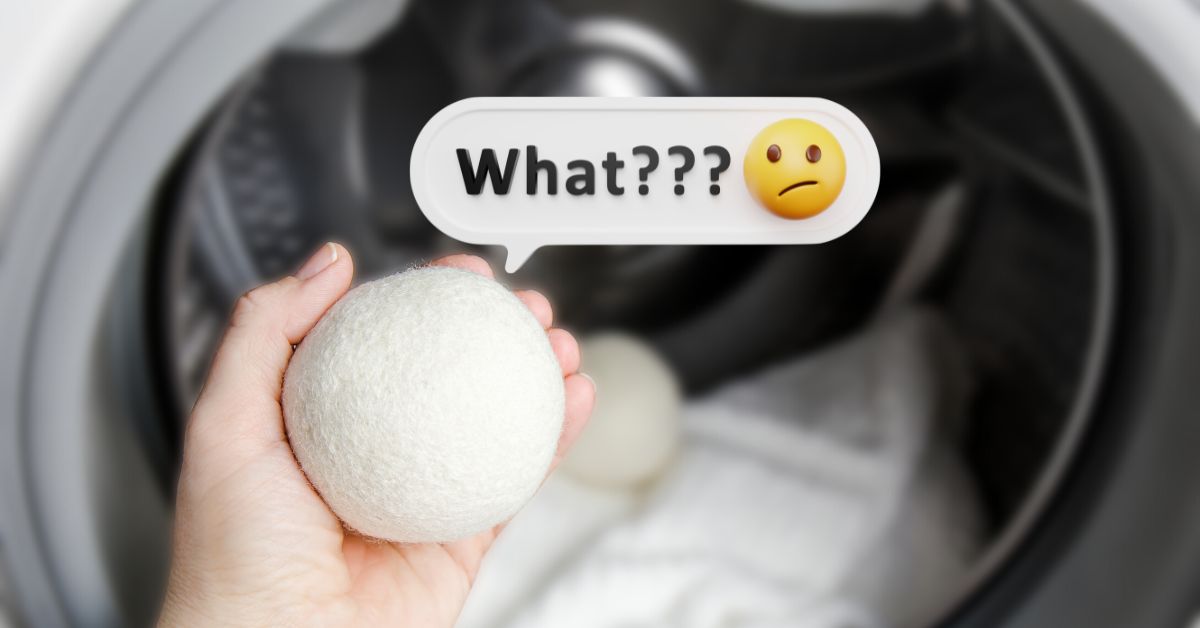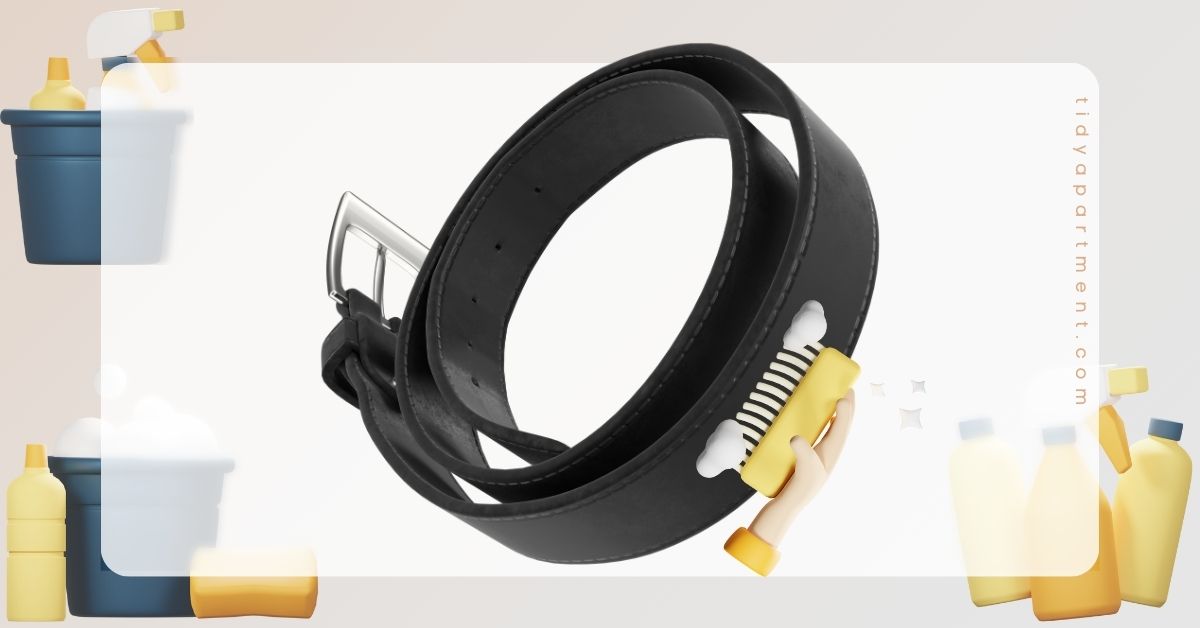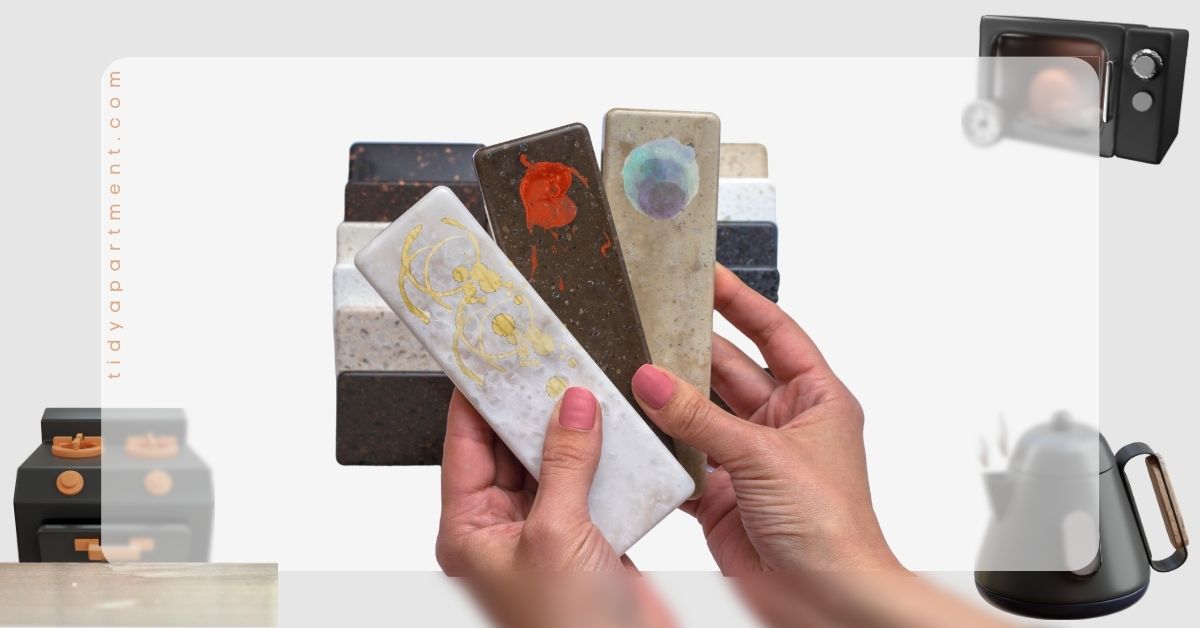Have you also hesitated to wash your colored garments in cold water, fearing do colors bleed in cold water? It’s a common issue many people are facing. For years, people have believed colors don’t bleed when washed in cold water. But what if we told you that your water temperature might not be as crucial as you think?
Advances in fabric dyeing technologies and modern laundry detergents have significantly reduced the risk of color bleeding, even in cold water washes. However, certain precautions should be considered, especially when dealing with heavily dyed or new garments.
Page Content
Does Color Bleed in Cold Water?
While cold water can help minimize color bleeding compared to warmer temperatures, it may not eliminate the risk. Some fabrics, especially those with unstable or strong dyes, can still experience color bleeding even in cold water.
Cold water does not open up the fabric fibers as much as warmer water, which reduces the chances of releasing dye. However, certain dyes may still be prone to leaching out of the fabric, particularly if they are heavily dyed.
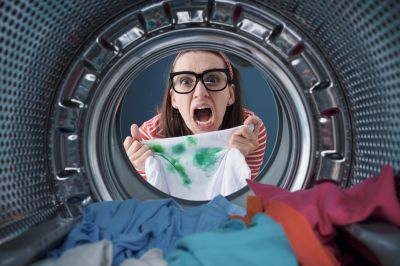
How Does Color Bleed?
Color bleeding happens during the washing process when dyes of one fabric are transferred to another fabric. Water temperature can play a significant role in color bleeding. Color bleeding can vary with different water temperatures.
- Cold Water: Cold water minimizes color bleeding because it doesn’t cause the fabric fibers to open up as much as hot water. This helps to prevent the dyes from leaching out of the fabric.
- Warm Water: Warm water can increase the risk of color bleeding compared to cold water. The slightly higher temperature can cause the fabric fibers to open up to a greater extent, increasing the potential for dyes to transfer between garments.
- Hot Water: Hot water can lead to more significant color bleeding. The high temperature causes the fabric fibers to expand and open up, allowing dyes to release more easily from the fabric.
Notably, newer, delicate, and brightly colored clothes are more likely to bleed colors. We advise separating clothes by color, drying time, and water temperature to prevent color bleeding.
Don’t know how to separate laundry? If yes, then you must read: How to separate laundry?
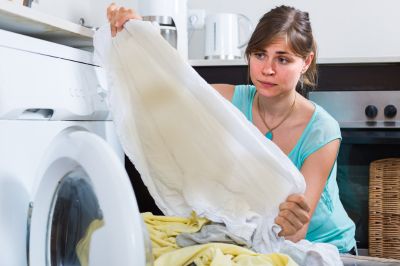
What Fabrics Have Risks of Color Fading?
| Fabric Type | Risk Level of Color Bleeding |
| Cotton | Medium to High |
| Rayon | Medium to High |
| Silk | High |
| Wool | High |
| Linen | Medium to High |
| Dark Denim | High |
| Deeply Dyed Fabrics | High |
| Red Fabrics | High |
| Delicate Fabrics | Medium to High |
| Acrylic | Low to Medium |
| Polyester | Low |
| Nylon | Low |
It’s important to know that the risk level of color bleeding may vary depending on the type of fabric, the type of dye used, and the garment’s construction.
Conduct a colorfastness test before washing. It can help to determine the potential for color bleeding.
Conduct Colorfastness Test
Various tests can be conducted to determine the colorfastness of a material. One common test is the colorfastness to washing test, where the fabric or dyed sample is subjected to repeated washing cycles and evaluated for any color bleeding or fading.
We recommend you hand wash or separately wash your newly bought garments to determine whether they bleed color. If they don’t bleed color even after 4 or 5 washes, you can wash them with similar loads of laundry.

Best Practices to Wash Colored Clothes
Washing colored clothes requires special care and treatment to prevent color bleeding. Here are some best practices for washing colored clothes in cold water:
- Test New Clothes: Before washing new colored garments, it’s a good practice to test them for colorfastness. Dampen a small hidden area of the fabric and press a white cloth against it. If the dye transfers onto the cloth, wash the garment separately.
- Use a Color-Safe Detergent: Choose a detergent specifically formulated for washing colored clothes. Look for detergents labeled as color-safe or designed to preserve colors.
- Use Cold Water: Wash your colored clothes in cold water, preferably using the cold water setting on your washing machine. The cold water helps to prevent the dyes from loosening or bleeding.
- Use Gentle Cycle: Opt for the gentle or delicate cycle when using a washing machine. This cycle minimizes the agitation and reduces stress on the fabric, preserving the color and quality of the garments.
- Air Dry or Low Heat: It’s a good idea to air dry your colored clothes after washing. If you need to use a dryer, it’s best to opt for a low-heat setting to safeguard the material and avoid fading colors.
Related: Can you mix colors in the dryer?
Common Misconceptions About Color Bleeding in Cold Water
| Myths | Facts |
| Cold water always prevents color bleeding. | While cold water is generally safer for colored garments, it doesn’t guarantee complete prevention of color bleeding. Some dyes may still release a small amount of color, especially in the initial washes. However, using cold water reduces the risk compared to hot water. |
| Color bleeding only happens during the first wash. | While new garments are more likely to bleed in the first few washes, color bleeding can still occur even after multiple washes. It’s essential to continue following proper washing practices to minimize the risk of color bleeding over the garment’s lifespan. |
| Only dark colors bleed. | While darker colors may appear more prominent when they bleed, lighter or pastel colors can also bleed. It’s essential to wash all colored garments carefully, regardless of their hue, to prevent color bleeding and maintain their appearance. |
| Dry cleaning is the safest option for colored garments. | Dry cleaning can be suitable for specific garments, but it’s not always necessary or the safest choice for colored garments. Many garments labeled as “dry clean only” can be safely washed at home using proper techniques, including washing in cold water with color-safe detergents. |
| Color bleeding is the only cause of color fading. | While color bleeding can contribute to color fading, other factors such as exposure to sunlight, frequent washing, and improper care can also cause colors to fade over time. Protecting colored garments from direct sunlight and following proper care instructions are crucial for maintaining their vibrancy. |
- Do colors bleed in hot or cold water?
Colors are more likely to bleed in hot water than in cold water, as the heat can cause the fabric fibers to open up and release the dye. However, some dyes may bleed in cold water, especially if they are not properly set or the fabric is heavily dyed.
- Is it bad to wash colors in cold water?
It is not bad to wash colors in cold water; cold water can effectively clean clothes while minimizing the risk of color transfer or damage to the fabric.
- What are the cons of washing clothes in cold water?
Cold water is not effective in killing certain types of germs and bacteria. Also, cold water may not be effective in removing certain types of stains compared to warm water.
Conclusion
Cold water can reduce the chance of color bleeding but not completely eliminate them. Also, different fabrics have different risks of color bleeding in different water temperatures. To stay on the safer side, we recommend you check and follow the care label of clothes and always do a colorfastness test.
Related: Can you dry dark and light-colored clothes together?

